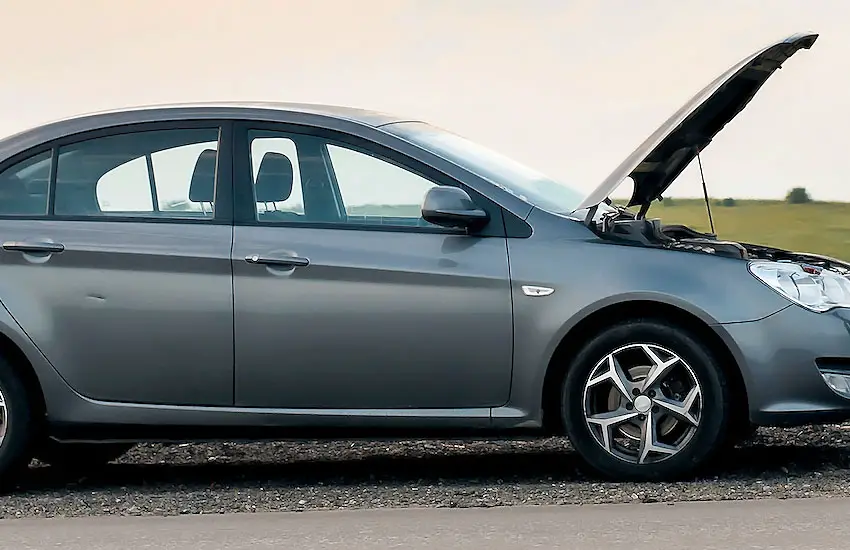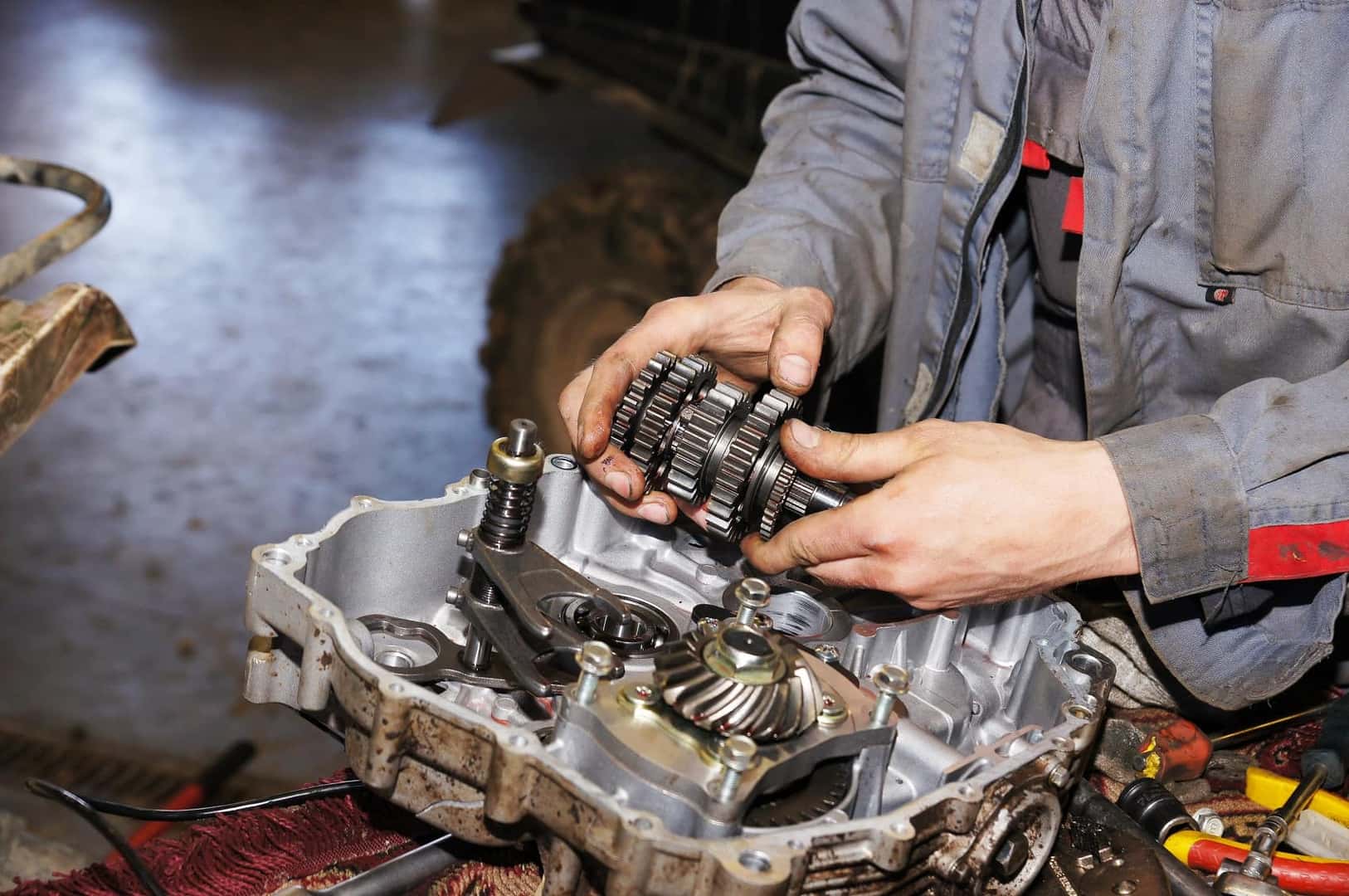As an Amazon Associate, I earn from qualifying purchases at no extra cost to you.
Car Stalls In Reverse: Troubleshooting Tips for a Common Issue
You’re ready to go, but your car stalls when you try to reverse. It’s frustrating, right? This common issue can happen due to a few reasons. Let’s dive into troubleshooting tips to get your car back on track.
When your car stalls in reverse, it could be because of a dirty fuel filter or a problem with the idle control system. Sometimes, low transmission fluid or a faulty sensor can also be the culprit. Don’t worry, though.
In this article, we’ll walk through simple steps to diagnose and fix these problems. By the end, you’ll be equipped with the know-how to tackle this issue head-on and keep your car running smoothly.

Common Issue: Car Stalls In Reverse
If you have ever experienced your car stalling when you try to reverse, you know how frustrating and inconvenient it can be. This common issue can occur for several reasons, causing your car to unexpectedly cut out when you shift into reverse gear.
Possible Causes
When your car stalls in reverse, it can be traced back to a few potential causes. These causes can range from minor issues to more serious problems that require immediate attention. Here are some possible causes of a car stalling in reverse:
- Low engine idle speed
- Fuel delivery issues
- Transmission problems
- Faulty sensors or electrical components
- Engine misfire
By addressing these potential causes, you can narrow down the issue and take the necessary steps to fix it.
Symptoms to Look Out For
A car stalling in reverse typically exhibits a range of noticeable symptoms. Being aware of these symptoms can help you identify the underlying issue and convey the necessary information to a mechanic or technician. Here are some common symptoms associated with a car stalling in reverse:
- Engine hesitation or sputtering when attempting to reverse
- Inconsistent or rough idle when in reverse gear
- Sudden loss of power or acceleration in reverse
- Stalling immediately after shifting into reverse
If you notice any of these symptoms, it is crucial to address the issue promptly to prevent further damage to your vehicle and maintain your safety on the road.
1. Check the Transmission Fluid
If your car stalls when you put it in reverse, one of the possible culprits could be an issue with the transmission fluid. The transmission fluid plays a vital role in allowing the gears to shift smoothly and efficiently. Any problems with the fluid levels or condition can impair the overall performance of your vehicle.
Ensure Proper Levels
To begin troubleshooting this issue, you should start by checking the transmission fluid levels. It is essential to have the right amount of fluid in the system for it to function correctly. Low levels of fluid can lead to a lack of lubrication, causing your car to stall.
To check the fluid level:
- Start by parking your car on a level surface and engaging the parking brake.
- Locate the transmission fluid dipstick, usually near the back of the engine compartment, but refer to your owner’s manual for the exact location.
- With the engine running and the transmission in park, remove the dipstick and wipe it clean with a cloth or paper towel.
- Reinsert the dipstick and pull it out again to get an accurate reading. Ensure the fluid reaches the appropriate level indicated on the dipstick. If it is below the recommended level, you may need to add more fluid.
Assess Fluid Condition
In addition to checking the fluid levels, it is crucial to assess the condition of the transmission fluid. Contaminated or degraded fluid can cause various transmission issues, including stalling in reverse. Follow the steps below to evaluate the fluid’s condition:
- Once again, with the engine running and the transmission in park, remove the dipstick.
- Observe the color and consistency of the fluid. It should be transparent and have a bright red hue. If the fluid appears dark, brownish, or has a burnt smell, it may be a sign of contamination or problems within the transmission.
- If you suspect the fluid is contaminated, it is advisable to have it inspected by a qualified mechanic. They can determine the extent of the issue and recommend the appropriate course of action, which may include a fluid change or a more in-depth transmission inspection.
Regularly checking and maintaining the transmission fluid levels and condition is essential for ensuring your car’s smooth operation. By adhering to these simple steps, you can eliminate one potential cause of your car stalling when put in reverse.
2. Inspect The Idle Air Control Valve
Inspecting the Idle Air Control Valve is crucial when troubleshooting a car that stalls in reverse.
The Idle Air Control (IAC) valve helps regulate the airflow in your car’s engine, especially when the engine is idling or when you change gears like going into reverse.
Why Inspect?
When your car stalls in reverse or at idle, it could indicate issues with the IAC valve. Here's how to inspect it:
Steps:
- Locate the IAC Valve: It’s usually near the engine’s intake manifold or attached to the throttle body.
- Visual Inspection: Check for any signs of dirt, debris, or carbon buildup around the valve.
- Clean the Valve: If you notice buildup, use a recommended cleaner for your car model to remove dirt and carbon deposits.
- Check for Proper Functioning: Ensure the valve moves freely without sticking.
3. Evaluate the Fuel System
Your car stalling when in reverse can be a frustrating issue. One common cause of this problem can be related to the fuel system. It’s important to thoroughly inspect the fuel components to identify any issues that may be causing the stalling.
Check Fuel Pump Functionality
To start diagnosing the fuel system, verify that the fuel pump is working correctly. Begin by turning the ignition on without starting the engine and listen for a humming sound near the rear of the car, which indicates the pump is functioning.
- Listen for a distinct sound coming from the fuel tank area.
- If you don’t hear anything, it may indicate a faulty fuel pump.
- Consider checking the fuel pump fuse as well.
Inspect Fuel Filter
The fuel filter plays a crucial role in maintaining fuel purity. A clogged filter can restrict fuel flow and lead to stalling issues. Regular inspection is key to preventing problems.
- Locate the fuel filter in your vehicle, typically near the fuel tank.
- Visually inspect the filter for any signs of blockage or debris.
- If the filter appears clogged, it’s recommended to replace it with a new one.
By checking the fuel pump functionality and inspecting the fuel filter, you can pinpoint potential causes of your car stalling in reverse. Addressing fuel system issues promptly can help keep your vehicle running smoothly.
4. Examine The Exhaust System
Look For Blockages
Firstly, ensure there are no blockages in the exhaust system. Blockages can lead to a restriction in the flow of exhaust gases, causing pressure to build up and impact engine performance.
An obstruction, such as a clog or debris, can cause the engine to stall when in reverse gear. Inspection of the exhaust system for any signs of blockages, such as physical obstructions or excessive carbon buildup, is essential.
This meticulous examination can assist in pinpointing potential issues related to the stalling problem.
Check For Leaks
Another crucial aspect is to check for leaks within the exhaust system. Leaks can lead to the escape of exhaust gases before they are properly processed, impacting engine performance and potentially causing stalling.
Examine the exhaust system for any signs of leaks, such as visible damage to the pipes, muffler, or catalytic converter. It is imperative to address any leak found promptly to prevent further issues and restore the optimal function of the exhaust system.
5. Assess The Engine Sensors
The engine sensors play a crucial role in the smooth operation of your car. Ensuring they are functioning properly can help prevent stalling in reverse.
Inspect The Oxygen Sensor
- Check for any signs of damage or wear on the oxygen sensor.
- Ensure the oxygen sensor is sending accurate data to the engine control unit.
Check The Mass Airflow Sensor
- Inspect the mass airflow sensor for any dirt or debris that may be affecting its performance.
- Clean or replace the mass airflow sensor if necessary to restore proper airflow readings.
6. Test the Spark Plugs and Ignition System
If your car stalls in reverse, it can be frustrating and potentially dangerous. One of the common causes of this issue is a problem with the spark plugs or ignition system. To get to the root of the problem, you need to test these components. Here are two important steps to follow:
Inspect Spark Plug Condition
The first step in diagnosing the issue is to inspect the condition of the spark plugs. Faulty or worn out spark plugs can cause misfires and disruptions in ignition, leading to a car stalling in reverse. Here’s what you need to do:
- Open the hood of your car and locate the spark plugs. They are usually connected to thick, insulated wires.
- Carefully remove the spark plug wires one at a time, using spark plug pliers or insulated gloves.
- Inspect each spark plug for signs of wear, such as black soot deposits, damaged electrodes, or oil residue. If you notice any of these issues, it’s time to replace the spark plugs.
- If the spark plugs appear to be in good condition, you can proceed to the next step of testing the ignition coil.
Assess Ignition Coil Functionality
The ignition coil plays a crucial role in providing the spark necessary for ignition. A faulty ignition coil can disrupt the spark production, resulting in a car stalling in reverse. To assess the functionality of the ignition coil, follow these steps:
- Locate the ignition coil, typically found near the engine, and identify the individual coils if your car has a coil-on-plug system.
- Using an ohmmeter, check the resistance of each coil. A reading within the specified range indicates a functioning coil. Consult your vehicle’s manual or a trusted mechanic for the specific resistance values.
- In case any of the readings are outside the specified range, it’s likely that the ignition coil is faulty. Consider replacing the affected coil(s) to resolve the issue of stalling in reverse.
By thoroughly inspecting the spark plugs and assessing the ignition coil’s functionality, you can narrow down the cause of your car stalling in reverse. If these tests don’t resolve the issue, it’s recommended to consult a professional mechanic for further diagnosis and repair.
7. Consider The Torque Converter
Evaluate The Torque Converter Lock-up Clutch
An issue that commonly arises with the torque converter is the lock-up clutch, which is responsible for mechanically linking the impeller and turbine. When the lock-up clutch fails to engage or disengage properly, it can result in the car stalling when shifting into reverse. To evaluate the lock-up clutch, you can follow these steps:
- Start by checking the fluid level and condition. Low or dirty transmission fluid can cause the lock-up clutch to malfunction.
- Next, perform a stall test. This involves shifting the transmission into drive and accelerating to a moderate speed. If the engine stalls suddenly without any warning signs, it may indicate a problem with the lock-up clutch.
- Lastly, consult a professional mechanic if you suspect an issue with the lock-up clutch. They will have the necessary tools and expertise to diagnose and repair the problem.
Check For Mechanical Issues
In addition to the lock-up clutch, there could be other mechanical issues within the torque converter that are causing your car to stall in reverse. These may include:
- Worn or damaged bearings: If the bearings inside the torque converter are worn or damaged, it can lead to excessive friction and cause the car to stall.
- Broken pump blades: The pump blades inside the torque converter play a crucial role in circulating the fluid. If any of these blades are broken, it can disrupt the flow of fluid and result in stalling.
- Internal leaks: Internal leaks within the torque converter can cause a loss of fluid pressure, leading to a drop in performance and eventual stalling.
If you suspect any of these mechanical issues are causing your car to stall in reverse, it is recommended to have your vehicle inspected by a qualified mechanic. They will be able to identify the problem and provide the necessary repairs to get your car back on the road.

Credit: www.speedcraftvw.com
Conclusion
If your car stalls in reverse, don’t panic. It could be a minor issue that can be fixed easily with proper diagnosis. Regular maintenance and timely repairs can prevent stalling. Consult a mechanic for a thorough inspection to ensure your vehicle runs smoothly and safely.
Drive with peace of mind.











